Power consumption at different load conditions
Now let's look at the power consumption of the map and take a look at the partial load ranges. As with the Radeon RX 580, AMD is now relying on further clock steps, so that the power consumption could be significantly reduced, especially in the dual-monitor setup and the hardware-accelerated video playback. However, this only works with the monitors if identical resolutions and repeat rates have been set.
In gaming, however, the card strikes abundantly. For the additional 30 MHz and the fast memory, the new version will charge 13 watts more in supplied power. It becomes even clearer with the stress test, which almost completely exhausts the power limit of 200 watts. Both values also show that Asus tries to stabilize the boost stroke better than its predecessor by a higher limit.
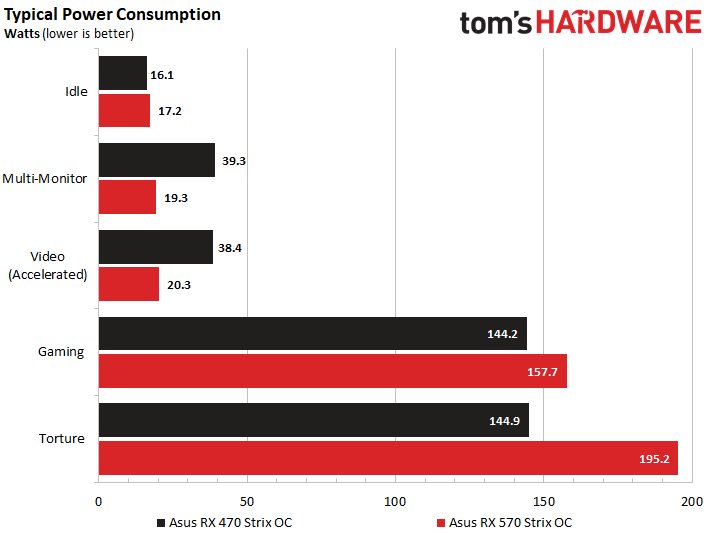
If we look at the voltages over a longer period of time, the average is just over 1.15 volts. That's 0.15 volts more than with the Asus RX 470 Strix, which shows where to get the higher clock and, above all, cement it, because with the previous map, the theoretically achievable 1270 MHz were more of a pipe dream.
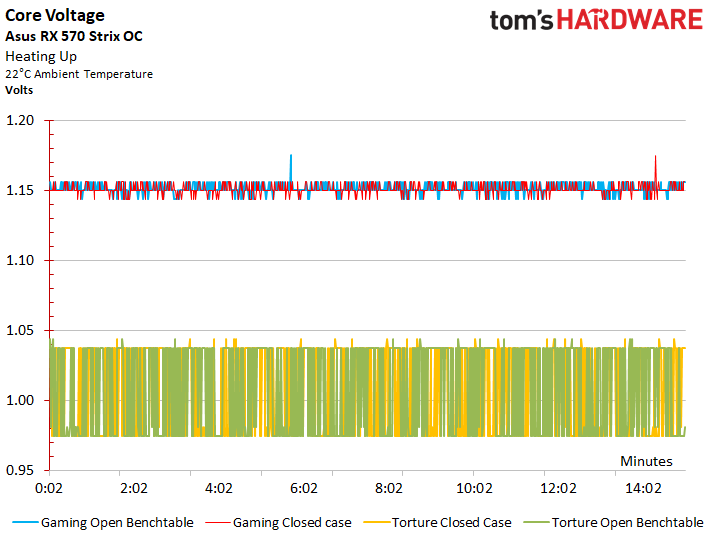
Power consumption in detail
The curves of the power consumption in gaming and the torture loop could not be more different. While the peaks in gaming are up to approx. 225 watts high, the average value is still quite low.
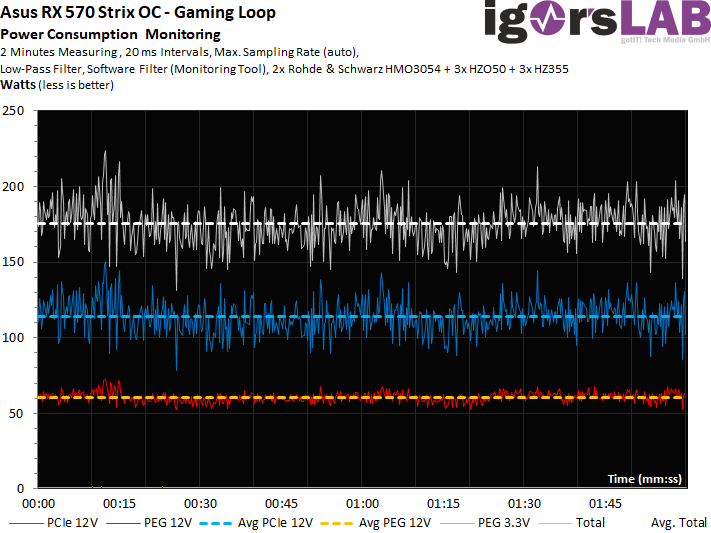
The significantly higher power consumption during the stress test results from the much more constant load, which drives the card to the set power limit of 200 watts.
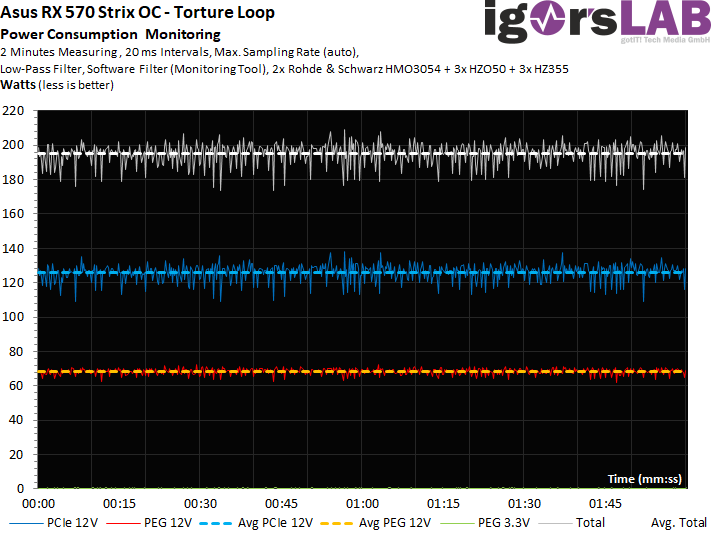
Flowing currents and balancing
Let us now return to the already mentioned voltage supply via only three real phases and compare the flowing currents on the individual supply rails. The tips on the motherboard slot are just over 6 amperes in gaming, although the PCI SIG actually defines only 5.5 amperes as the standard. However, the whole thing is then again relativized over the average value in the long-term view, which with a good 5 amperes is just below the standard limit. A slightly finer distribution at 6 phases could certainly have avoided this slight imbalance comfortably.
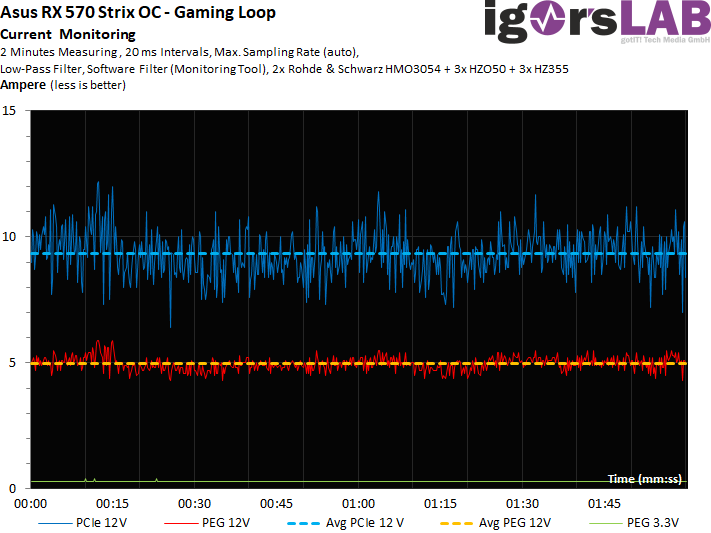
Because it's still a bit more violent. In the Torture Loop, the card even exceeds the standard a little in the average with 5.6 amps. In principle, this is no reason to look at the fire extinguisher immediately; we have already had to write a lot about this topic after the launch of the Radeon RX 480. Nevertheless, it is not really conducive to stability with further overclocking tests and older hardware.
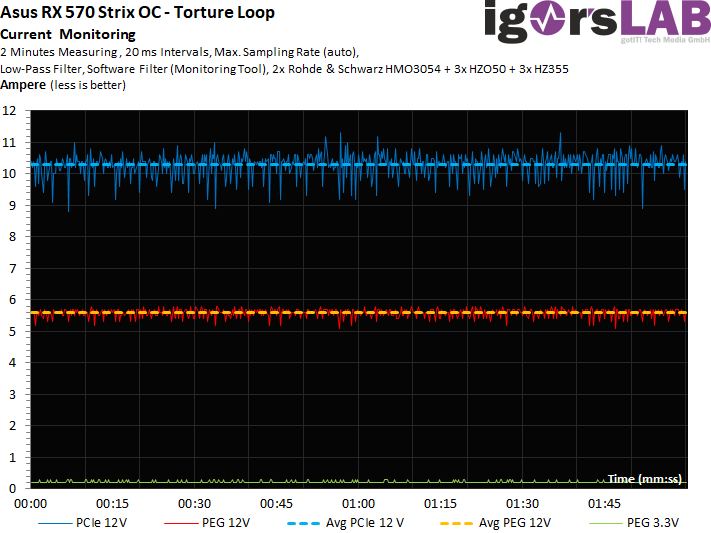
For the sake of better clarity, we have also summarized the determined values as a bar graphic:
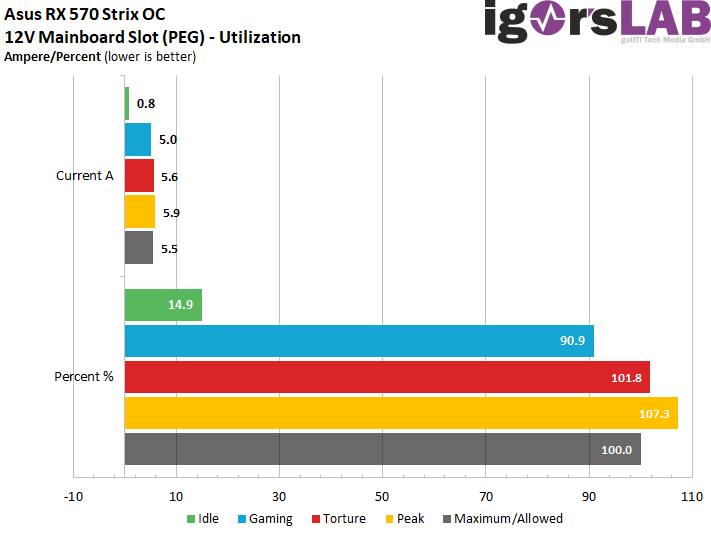
Intermediate conclusion
What is narrow, long, heavy and replaces a key in an emergency? With the crowbar, pretty much anything can be achieved and here, too, you have missed a smoothing Botox effect with a decent voltage increase of the power curve. The extra clock does not result from a generally improved chip, but probably mainly from the increased forced feeding with energy-charged juice.


















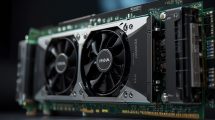













Kommentieren